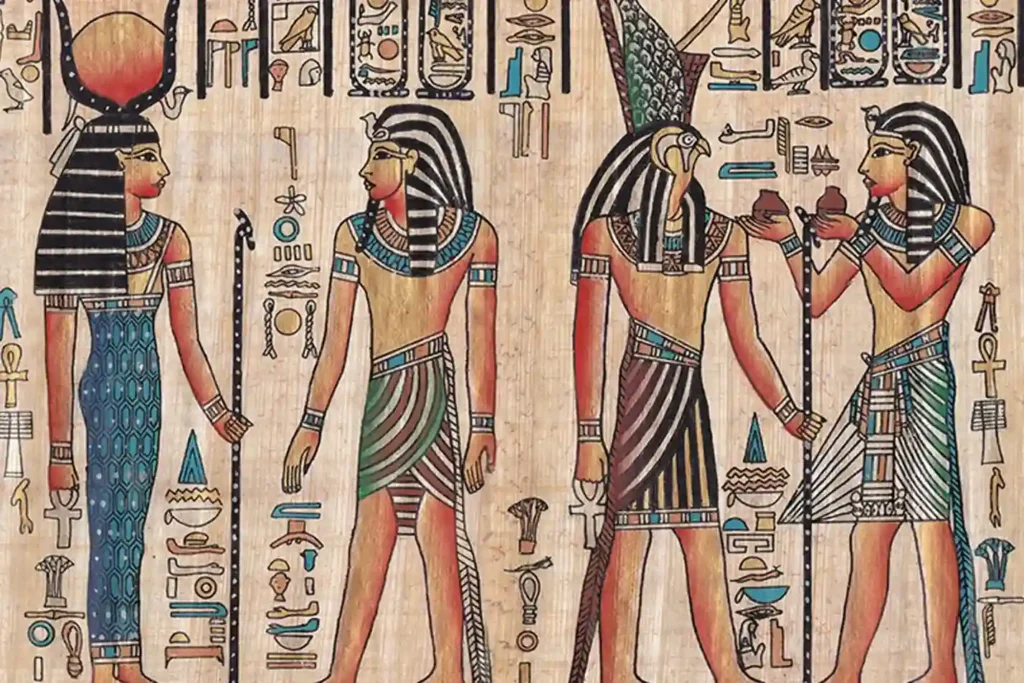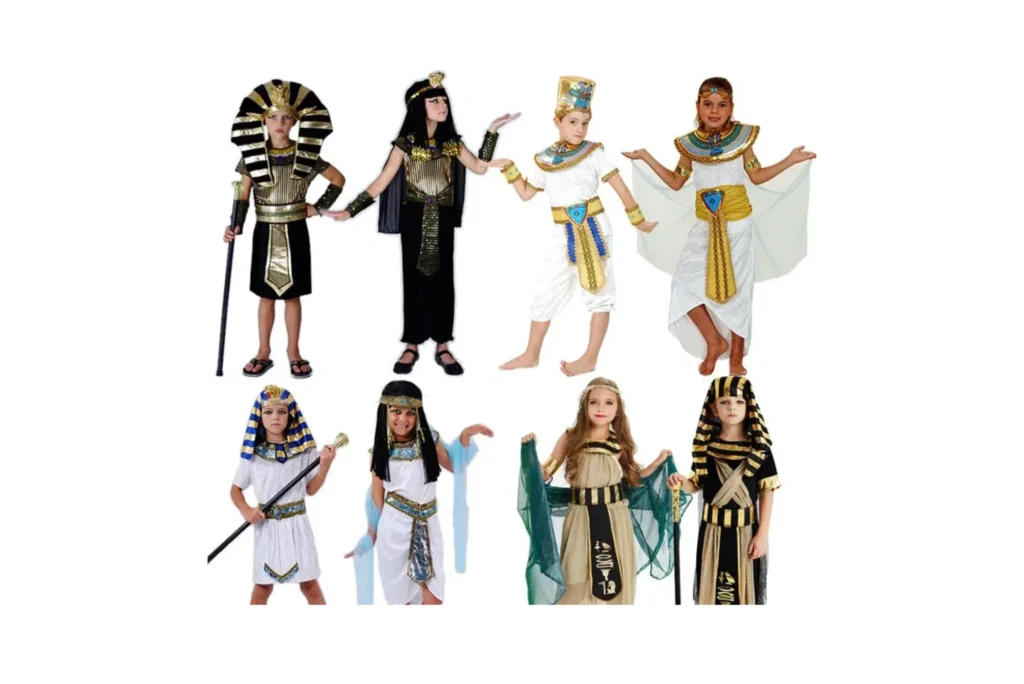Clothing is a fascinating lens through which we can explore the culture, history, and traditions of different regions. Egypt and India, two ancient civilizations with rich heritages, have distinctive styles of clothing rooted in their geography, history, religion, and societal norms. While there may be some similarities in their traditional attire due to shared influences of trade and ancient connections, the differences between Egyptian and Indian clothing are profound. This article delves into the factors that shape the clothing styles in these two regions and highlights their unique characteristics.
Understanding the Cultural Context of Clothing
Clothing in any society reflects its cultural values, climate, and available resources. In Egypt, the desert climate and Islamic cultural heritage largely dictate what people wear. Conversely, India’s diverse climate and the influences of Hinduism, Buddhism, and other religions have led to a wide variety of clothing styles. These differing cultural and environmental factors serve as the foundation for understanding why Egyptians and Indians do not wear the same type of clothing.

Historical Evolution of Clothing in Egypt
Egyptian clothing traces its roots to the ancient Pharaonic period. During that time, clothing was made primarily from linen, a fabric well-suited to the hot and dry climate. The attire for men and women was simple, often consisting of tunics, kilts, or long robes. Over time, Islamic influences shaped modern Egyptian clothing, with a shift toward modest attire.
In contemporary Egypt, traditional clothing like the galabeya, a loose-fitting robe, remains popular, especially in rural areas. Modern Egyptians often blend Western-style clothing with their traditional attire, particularly in urban centers like Cairo and Alexandria. However, the underlying theme of modesty, influenced by Islamic teachings, continues to define clothing choices.
Historical Evolution of Clothing in India
India’s clothing history is equally rich and varied, dating back to the Indus Valley Civilization. Traditional Indian attire includes garments like sarees, dhoti, kurta, and lehenga, crafted from fabrics such as cotton and silk. India’s clothing styles reflect its climatic diversity, ranging from the warm plains to the cooler Himalayan regions.
Religion and rituals have also significantly shaped Indian clothing. The saree, for instance, is not just a piece of cloth but a symbol of Indian womanhood, draped differently across regions to signify cultural identity. Similarly, men’s clothing like the kurta-pajama or lungi has a functional yet cultural significance.
India’s vibrant textiles and intricate embroidery techniques, such as zari and bandhani, make its traditional attire unique and highly expressive, setting it apart from Egyptian clothing styles.
Key Differences Between Egyptian and Indian Clothing
To understand the differences, one must examine the environmental, cultural, and social contexts in which these attires are worn.
| Aspect | Egyptian Clothing | Indian Clothing |
|---|---|---|
| Climate Influence | Light, breathable fabrics like linen for desert heat. | Varied fabrics like cotton, silk, and wool for diverse climates. |
| Religious Influence | Religious symbolism is seen in sarees, turbans, and ritual attire. | Religious symbolism seen in sarees, turbans, and ritual attire. |
| Common Attire | Galabeya, hijabs, abayas for women; tunics and robes for men. | Sarees, salwar kameez, dhotis, and lehengas for women and men. |
| Textile Techniques | Simple, functional designs prioritizing comfort. | Complex, vibrant designs with heavy embroidery and patterns. |
| Modern Adaptations | Blend of Western and traditional styles. | Retention of traditional attire alongside global fashion trends. |
Similarities in Traditional Clothing
Despite these differences, there are certain similarities due to shared ancient trade routes and cultural exchanges. Both Egypt and India have a history of valuing light, breathable fabrics that cater to their climates. The use of loose-fitting garments is another commonality, ensuring comfort in their respective hot environments. Moreover, the practice of modest dressing for women, influenced by religious norms, is observed in both societies.
For instance, Egyptian women often wear hijabs and abayas, similar to the way Indian women may drape sarees modestly or wear salwar kameez with dupattas to cover their heads in conservative settings. This emphasis on modesty is a testament to the influence of cultural and religious values in both regions.
The Role of Religion in Clothing Choices
Religion plays a pivotal role in shaping the clothing styles of both Egyptians and Indians. In Egypt, Islam greatly influences attire, emphasizing modesty. Women often wear headscarves or full-length abayas, and men may don kufi caps or long robes. These clothing same choices are not just cultural but also spiritual expressions.
In India, clothing reflects the diversity of its religious practices. Hindus wear specific attire during festivals and rituals, such as sarees and dhotis. Similarly, Sikh men wear turbans, which are both a religious and cultural symbol. Buddhist monks wear saffron or maroon robes as a mark of renunciation, further underscoring the link between religion and clothing.
Modern-Day Clothing Trends
Globalization has had a significant impact on both Egyptian and Indian clothing. In urban Egypt, Western-style clothing like jeans and t-shirts is prevalent, especially among the younger generation. However, traditional garments like the galabeya continue to be worn during cultural or religious occasions.
In India, Western influence is equally evident, with a preference for jeans, shirts, and dresses in metropolitan cities. Nevertheless, traditional attire remains integral to festivals, weddings, and other ceremonies. Indian fashion designers have also successfully merged traditional elements with modern aesthetics, creating Indo-Western clothing that appeals to global audiences.
Fabrics and Textiles: A Key Differentiator
Fabrics and textiles are one of the starkest differentiators between Egyptian and Indian clothing. Egypt’s textile history revolves around linen, a fabric that provides comfort in the desert heat. In contrast, India’s textile industry is renowned for its diversity, offering fabrics such as silk, cotton, wool, and jute.
India’s intricate weaving techniques, such as Banaras silk and Kashmiri pashmina, are unmatched in their complexity and beauty. These textiles often feature vibrant colors and motifs inspired by nature, mythology, and cultural traditions. Egyptian textiles, while simpler in design, are equally functional and elegant, catering to the needs of their wearers.
The Impact of Globalization on Traditional Attire
Globalization has blurred the lines between traditional and modern clothing in both Egypt and India. While traditional garments remain a symbol of cultural identity, the younger generation often opts for Western styles. This shift reflects the influence of global media, fashion trends, and urbanization.
However, there is a growing movement in both countries to preserve and promote traditional attire. Initiatives to revive ancient textile techniques and showcase traditional clothing on international platforms have gained traction, highlighting the timeless appeal of Egyptian and Indian garments.

While Egypt and India share some historical and cultural connections, their clothing styles are distinct, shaped by unique environmental, religious, and societal influences. Egyptian clothing emphasizes modesty and functionality, reflecting its Islamic heritage and desert climate. Indian clothing, on the other hand, is a vibrant celebration of diversity, with each region offering its unique styles and textiles.
Both countries exemplify the power of clothing as a cultural expression, telling stories of their past and present. By appreciating these differences, we can celebrate the rich tapestry of global traditions that make our world so beautifully diverse.










